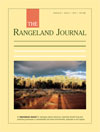RJ12025The validation of a model estimating the Leaf Area Index of grasslands in southern China
In order to estimate the leaf area index (LAI) of grassland over large areas, a model was constructed with NDVI as the independent variable by using the improved Beer–Lambert Law. The model provided the theoretical basis for the effective management of the grassland resources in southern China and the effective estimation of grassland carbon sink.




